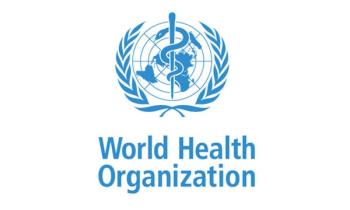The long-acting lipoglycopeptides (laLGPs) dalbavancin and oritavancin, currently indicated for skin and skin structure infections, were as effective as daily standard-of care (SOC) antibiotics in step-down regimens for gram-positive endocarditis, bacteremia, osteomyelitis and septic arthritis, in an emulation trial of the off-label use.1
These agents may be of particular value for people who use drugs (PWUD) and are unlikely to have access to outpatient parenteral therapy (OPAT), point out David Goodman-Meza, MD, PhD, Kirby Institute, University of New South Wales, Sydney, Australia, and colleagues.
"The lack of OPAT for PWUD individuals results in prolonged hospitalizations, higher rates of patient-directed discharge, premature treatment discontinuation, and mortality," observe Goodman-Meza and colleagues. "Long-acting lipoglycopeptides, such as dalbavancin and oritavancin, offer promising new treatment options for both PWUD and non-PWUD groups with these infections."
The investigators conducted the target trial emulation from observational data drawn from the Cerner Real World Data platform to compare laLGPs with SOC antibiotics in reducing post-discharge adverse outcomes in adults hospitalized with a serious bacterial infection. The primary outcome was a composite variable of clinical failure within 90 days of discharge which included readmission, emergency department visit, or inpatient mortality or discharge to hospice.
Over 42,000 individuals met inclusion criteria, of which 12% were PWUD. LaLGPs were prescribed for 241 PWUD and 584 non-PWUD participants. Dalbavancin was the most commonly presribed laGLP; and the most frequent conditions, in decreasing order, were osteomyelitis, bactermia, septic arthritis and endocarditis.
Goodman-Meza and colleagues reported that there was no statistically significant difference in the composite outcome between the laLGP and SOC groups in both the PWUD (HR, 1.01; 95% CI, 0.88-1.13) and non-PWUD (HR, 0.93 0.86-1.00) participants. In a comparison of specific antibiotics, non-PWUD participants in the laLGP group had a lower risk of the composite outcome compared with those prescribed vancomycin or cefazolin.
Learn more: Long-Acting Lipoglycopeptides for the Treatment of Severe Infections
As dalbavancin was the more frequently prescribed laLGP (possibly due to initially being approved with a shorter infusion time than oritavancin) the investigators noted that results might not extrapolate to experiences with oritavancin. Another limitation of the emulation trial was that records were insufficient to compare side effects from the laLGPs and SOC antibiotics.
"While we were able to assess clinical outcomes such as readmissions and mortality, side effect profiles such as infusion reactions, rash or laboratory abnormalities were not systematically recorded in a way that would permit meaningful comparison between groups," Goodman-Meza commented to Contagion. "That said, the existing literature suggests laLGPs are generally well tolerated, with low rates of serious adverse events."
Goodman-Meza emphasized that the study does support the long-acting antibiotics as an option for managing serious infections, particularly when standard daily intravenous therapy isn't feasible.
"For patients who face barriers to prolonged hospital stays or outpatient IV treatment, such as people who use drugs, laLGPs offer a safe, effective, and maybe more convenient alternative for step-down therapy," he said.
What You Need to Know
In a large observational emulation trial, laLGPs were found to be as effective as standard-of-care (SOC) daily antibiotics for serious gram-positive infections (eg, endocarditis, bacteremia, osteomyelitis, septic arthritis), with no significant difference in clinical failure rates within 90 days of discharge.
These agents may address key challenges faced by PWUD, such as limited access to outpatient IV therapy. laLGPs reduce the need for prolonged hospitalization and enable more convenient step-down therapy, which may improve adherence and outcomes in this population.
While dalbavancin was more commonly used and appears well-tolerated, the study had limitations, such as lack of detailed side effect data and unknown optimal dosing strategies.
Goodman-Meza anticipates that ongoing studies and others in the near future will address many of the remaining questions on the expanded use of laLGPs.
"We don't yet know how well these agents perform if given earlier in the course of illness—for example, in patients who are still bacteremic or clinically unstable.Similarly the optimal timing and number of doses for different infection types remain an open question," Goodman-Meza observed.
"As real-world experience grows, future studies should help refine when and how to best use these agents," he said. "Results from a randomized controlled trial using dalbavancin, the DOTS trial,2 were presented at ESCMID (Congress of the European Society of Clinical Microbiology and Infectious Diseases, Vienna, April 11-15, 2025), and we are awaiting the full results."
"For now, laLGPs represent a promising and practical option that can help extend high-quality infectious disease care to patients who may have challenges to daily antibiotics," Goodman-Meza advised.
References
1. Goodman-Meza D, Weiss RE, Poimboeuf ML, et al. Comparative effectiveness of long-acting lipoglycopeptides vs stardard-of-care antibiotics in serious bacterial infections. JAMA Netw Open. 2025; 8(5):e2511641. doi:10.1001/jamanetworkopen.2025.11641.
2. Turner NA, Zaharoff S, King H, et al. Dalbavancin as an option for treatment of S. aureus bacteremia (DOTS): study protocol for a phase 2b, multicenter, randomized, open-label clinical trial. Trials. 2022;23:407.


















































































































































































































































































